Mother & Daughter Communities – Comparing 3 Amish Settlements (39 Photos)
New Amish settlements come about in different ways. Sometimes settlers from different places mesh differing backgrounds and church standards to create a new community.
More often they have a distinct parent community responsible for the bulk of their initial residents. The daughter communities typically resemble the parent community – but are not necessarily carbon copies of their origin churches.
Today Don Burke looks more closely at this phenomenon, comparing three communities – one “mother” and two of its “daughter” settlements.
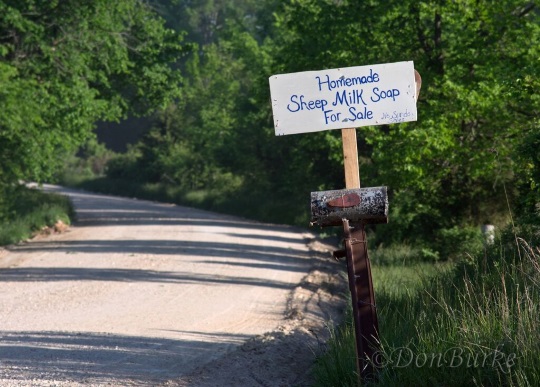
The family of five that I grew up in included my mom and two younger sisters. It’s been interesting through the years to see how one sister might take after Mom in one way, and the other sister share characteristics with Mom in another way – and yet all three are different from one another in their own ways.
The same kind of thing is sometimes noticeable among the Amish. I’m not referring to biological mothers and daughters, but to mother and daughter communities.
From time to time a few families within an established community will decide to move to a new location and start a new Amish settlement. We can think of this new place as the daughter community and the original location as the mother.
In this post I would like to share some things I have noticed in visits to three Amish communities: a mother settlement of Berne, Indiana, and two of her daughters that sprang up in Missouri – Seymour and Licking.
Introduction to the Communities
Berne, Indiana
According to the Journal of Amish and Plain Anabaptist Studies, the Berne (Adams County) Amish dates back to 1850, making it one of the twelve oldest settlements in the United States.
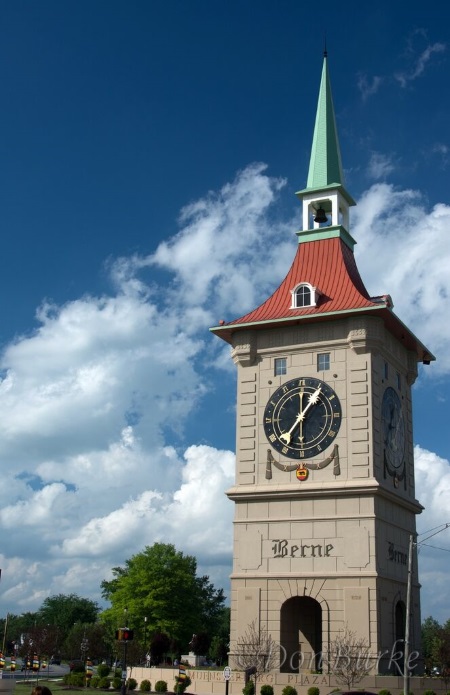
A commemorative plaque in Berne notes that the town was established in 1852 by 82 Mennonite immigrants from Switzerland. It is intriguing to wonder if the Swiss heritage of this Amish group was in any way connected with the Swiss background of these Mennonites.
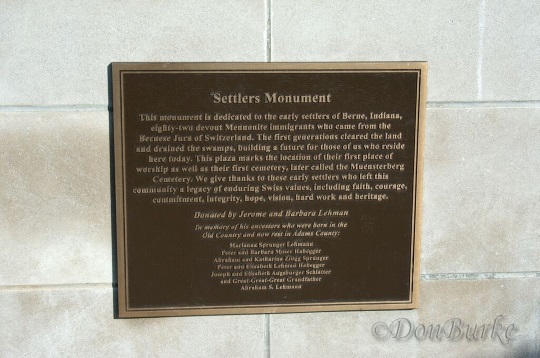
As of 2013 Berne had over 50 Amish church districts – second in that state only to the Amish in the greater Shipshewana area. Today that total has increased to 60.
The time I spent in the Adams County area was regrettably very limited for such a large area – just a portion of two days while returning from a stay in Shipshewana.
Seymour, Missouri
The Amish first settled in Seymour in early 1968 with some 20 families moving the 600 miles from Adams County. The three semi-trailer trucks used for the move carried a total of about 65 truckloads of their possessions.
The Seymour Amish now consider themselves to be two separate assemblies due to a split in 1975. But since they draw from a common heritage for our purposes they will be treated as one here. I did not notice any particular differences between the two regions while visiting there.
After a couple of unfruitful attempts to find the Amish while passing through Seymour, in May 2014 I did finally locate a few homes and a school off one of the main highways. Later that month I returned for a couple of days, this time aided with a county map (which included all the country roads), and was able to find many more of the Amish.
Licking, Missouri
Licking is the forty-year-younger “little sister” of Seymour. Because of rising costs for land and property taxes, coupled with zoning law problems, some in Berne pondered a move to Licking. February of 2009 saw the first two families move onto 800 acres they bought, with additional families trickling in through the coming months and years. Within nearly six years the Licking community grew to 37 families in two church districts.
The Licking and Seymour communities worked regularly with each other during the new group’s early months. Licking families often went to Seymour for church, and people from Seymour would make the 70 mile trek to offer help to the fledgling group.
Licking still maintains some ties with its mother community. At a small variety store in Licking I recently noticed that they still carry copies of the current Adams County Amish Directory.
I have only been to Licking once, which was a couple-hour pass-through visit on a very rainy day in May this year. I’m afraid the effect of the rain shows up in many of the photos I took that day.
Buggies
One of the easiest ways for me to begin to size up an Amish community, or compare different communities, is by noticing the characteristics of their buggies.
Berne may be the only place that I have personally seen a genuine Amish sleigh – complete here with side mount for holding the self-powered lantern (to help others see the vehicle after dark).
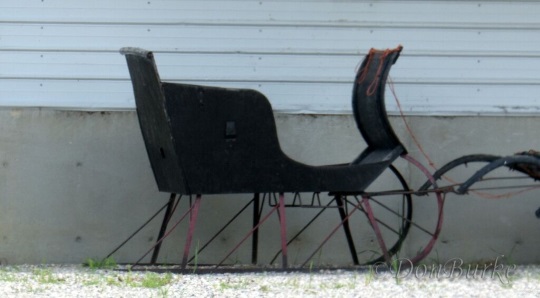
And like other Amish, Berne uses covered church wagons for benches and other biweekly service items.
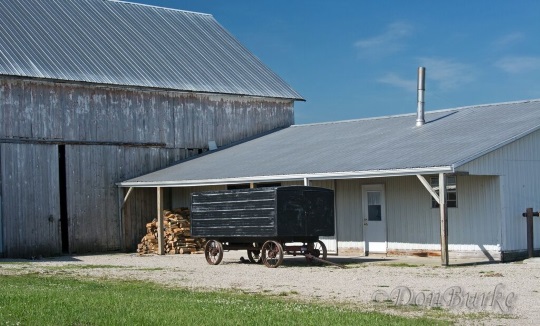
Personal travel in Adams County is done with open-air buggies. As Swiss Amish they would be expected to lean toward the more conservative end of the spectrum, yet they are not so extreme that they refuse to use the SMV triangles or reflectors on their buggies.
In fact, some buggies had so many reflectors that it struck me as even a bit flashy.
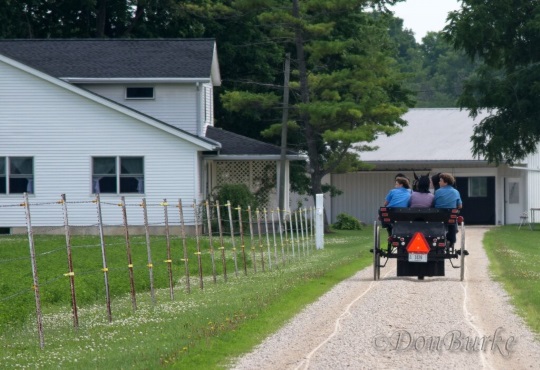
Buggies typically sported self-powered lanterns (either small-battery powered and/or kerosene-burners)…
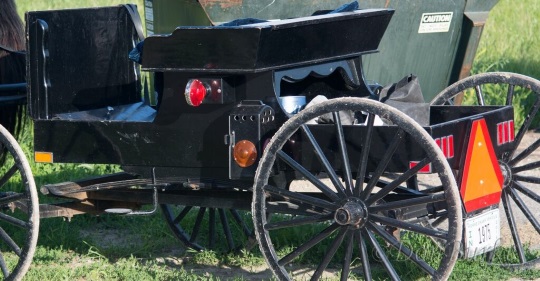
…but I did also notice some that may have been wired for car battery use.
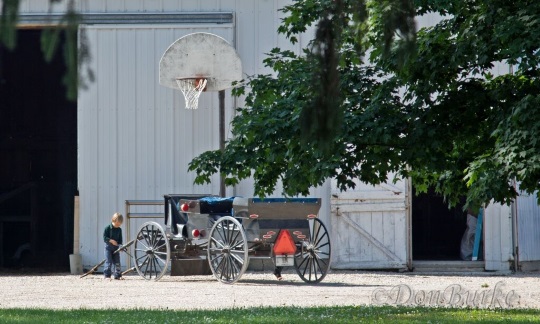
Seymour buggies were very similar to those in Berne, with open buggies being the only kind seen here as well. They had SMV triangles and reflectors, although the reflectors-per-buggy number did appear to be a little more limited.
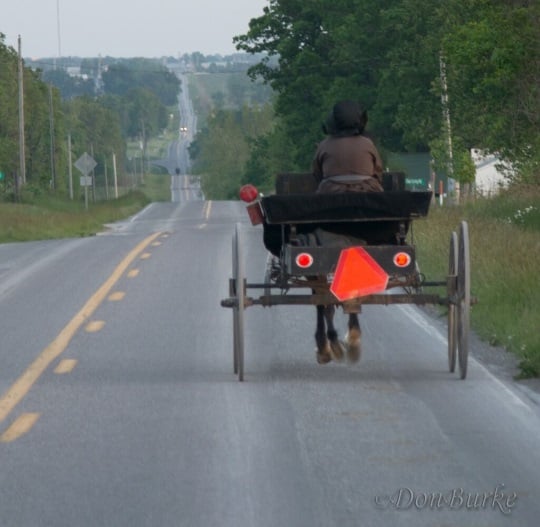
Both small-battery and kerosene lanterns were used here, but I didn’t notice any buggies that looked to be wired for car batteries.
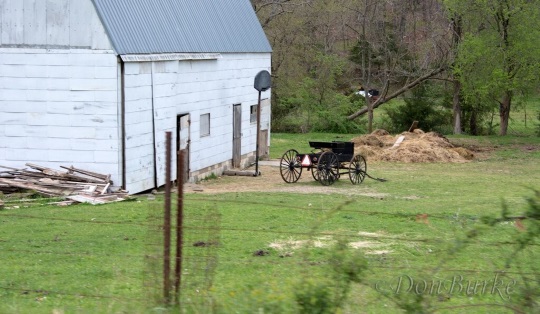
As already mentioned, my visit through Licking was on a wet and at times very rainy day. As such it wasn’t the kind of day a visitor would likely see the Amish out in their buggies. But even though I didn’t see any buggies on the road, I did chance to notice a few tucked away in a couple of sheds.
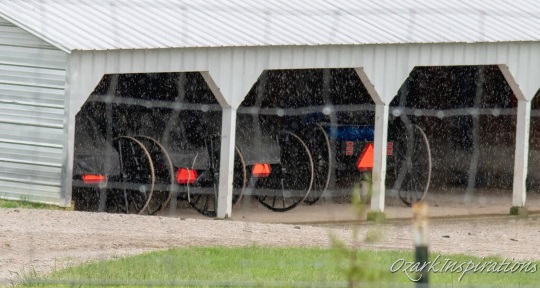
Sure enough, all were open-air, all sported the SMV triangle, and the use of reflectors on these few more resembled Berne than Seymour. I could not tell anything about the type of night-lantern/flasher equipment that they might have.
Homes
If the buggies highlighted the mother-daughter similarities, the houses emphasized their contrasts.
Before considering the homeplaces themselves, it bears mentioning that there is a considerable difference in the land and settings in these communities – things which are obviously outside of anyone’s control, but can affect our impressions of a property.
The Berne area is open flatland, often with few or no trees in the area immediately around a home, and tends to make the homes look brighter and more open.
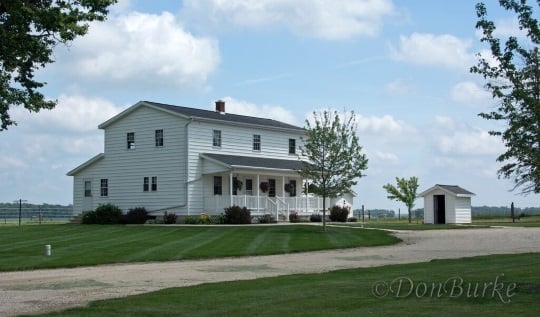
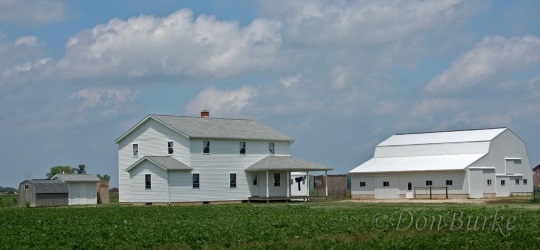
In contrast, Seymour is in the wooded hill country of the Ozarks, and the homes at times seem built in the middle of the woods or in a clump of trees. Under or behind the trees the properties can look dark and less inviting.
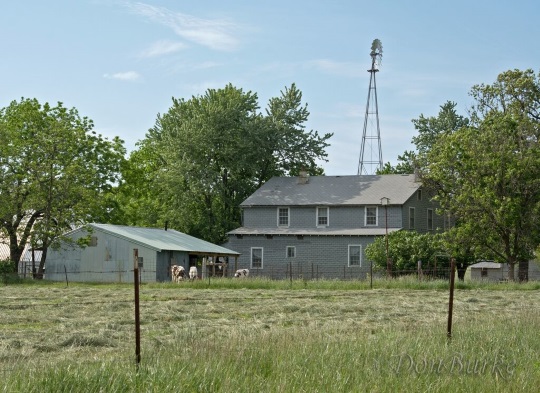
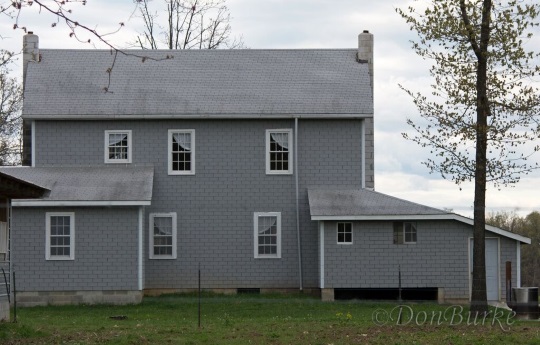
Licking is also in the Ozarks, but the setting there has a little more openness.
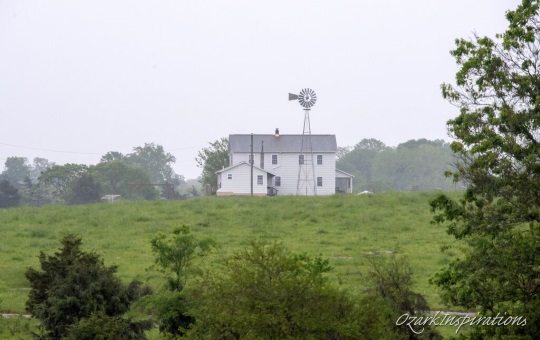
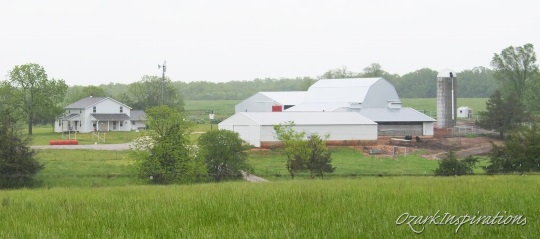
But even acknowledging this difference in settings doesn’t account for all the differences in the appearances of the properties.
I was very impressed with the homes and properties in Berne, and especially how well-kept they were. That isn’t to say that they were luxurious; and compared to some places they often lacked the scattered flowerbeds and other beautification trimmings some Amish homes have.
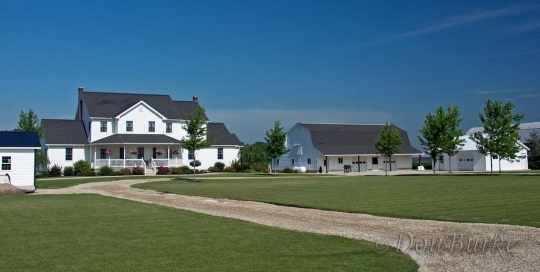
But what I am saying is that the properties looked clean and crisp in their maintenance, and were built with a degree of eye-appeal with modern design and materials.
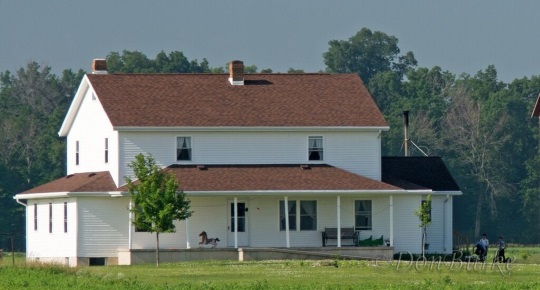
In contrast to this, the homes in Seymour lacked the same level of attention and up-keep.
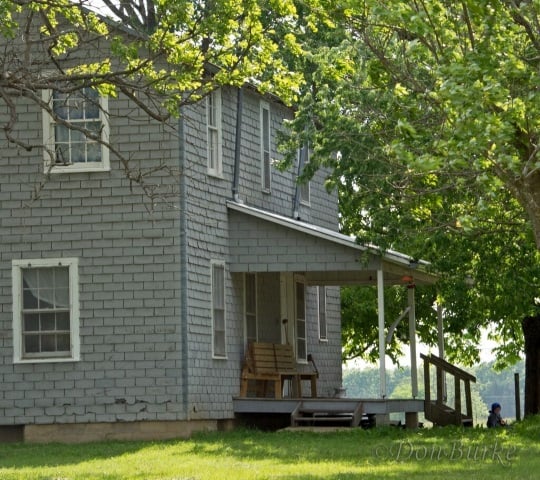
And unlike Berne, the chosen building materials in many cases just seemed unusual – most notably the many homes and buildings which had three-tab shingles or something resembling rolled roofing for exterior wall siding.
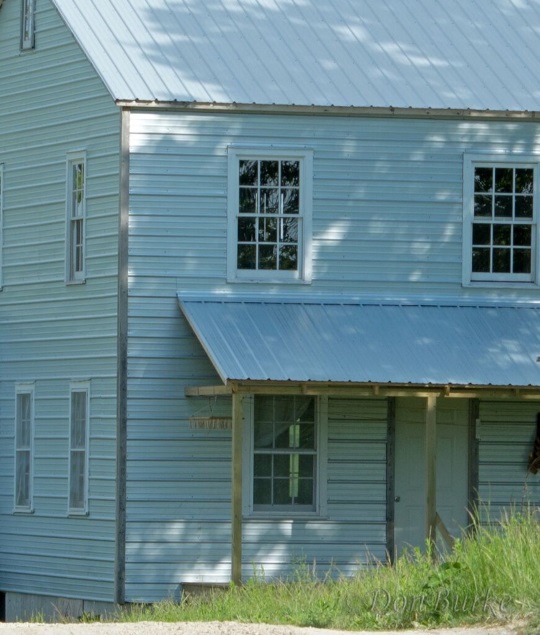
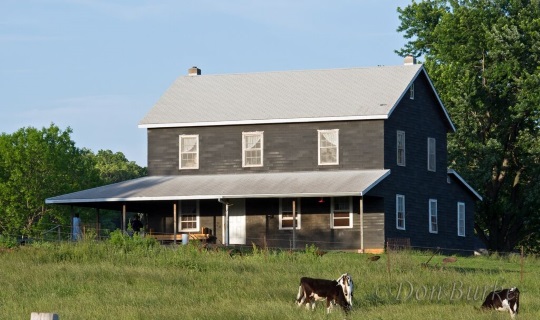
Licking homes appeared more plain and more uniform compared to Berne, and were much better maintained than Seymour.
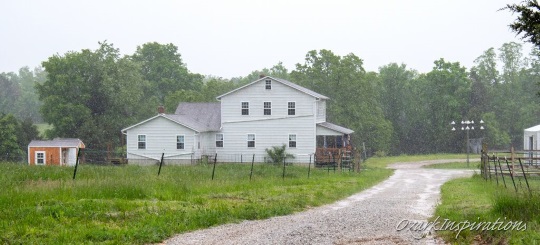
Not only did the Licking Amish limit their shingles to normal rooftop applications, many (possibly all) of their shingles were an architectural type. Architectural shingles are more “fancy” than regular three-tab shingles, so it surprised me to see them.
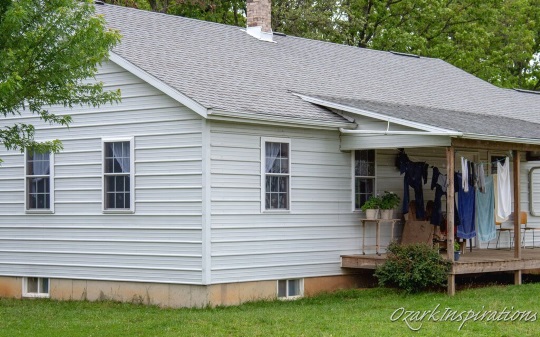
But they are also longer-lasting (with up to a 50% longer-rated life), and I have to wonder if that plays into the decision to use them.
All the Amish-built buildings (homes, sheds, barns, stores) used identical metal siding (which arguably emphasizes functionality, downplays eye-appeal and removes individuality).
The windows appear to be double-paned units, meaning they are nicer quality and functionally superior to the single-pane versions.
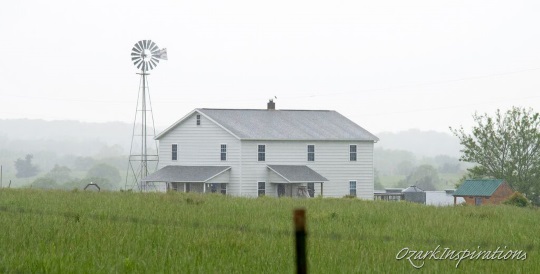
In summary, Berne homeplaces had more individuality, were more contemporary as well as more aesthetically-pleasing and well-kept.
Homes in Licking conformed to limitations in materials and design, had less eye-appeal, but reflected an allowance to sacrifice some level of plainness for improved functionality.
Seymour homes, whether by choice or by neglect, accentuated plainness, minimalized the effort and expense put into upkeep, and in some cases verged on appearing poverty-stricken.
Schools
Put simply, the schools were in similar (or possibly exaggerated) conditions to the homes in their respective communities. The Berne schools and properties were bright, well-kept and fresh-looking.
The Seymour schools were drab and quite run down.
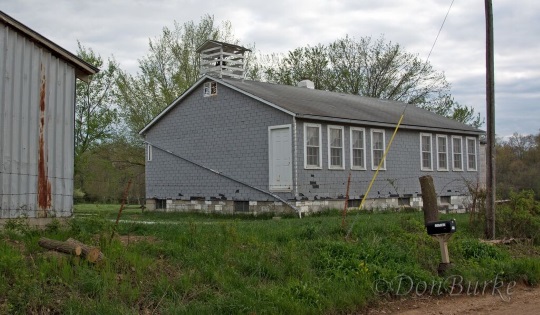
I did not find a school in Licking. This larger school in Adams County is one of the few two-story Amish schools that I have seen.
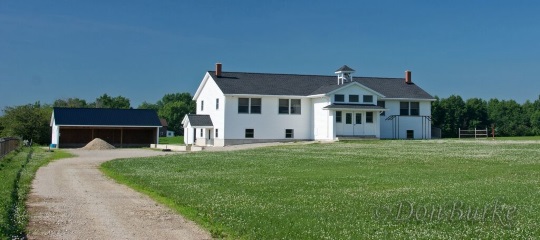
Stores and Home Businesses
I enjoy driving through an Amish area and take in what I can learn from things I see around, like buggies and homes and schools. But even better is when there is an opportunity to go into an Amish store or home business. This is where I get an opportunity to interact with the Amish themselves.
As already noted, these three communities are the more conservative Swiss Amish, and this sometimes conveys an air of stand-off-ish-ness towards us outsiders.
In my one stop at Licking, which was at a small variety store next to the owner’s home, that was certainly the feel I got. The mature lady running the store was certainly not unfriendly, but neither was she inclined to engage in any chit-chat or to give much more than a willing but direct answer to any direct question I might ask.

A young-ish lady tending a Seymour home store was much the same way, and might even be considered a little curt. And an older lady at the one store in Adams County was like the Licking store owner as well.
However, ladies in the home store bakery and the larger bulk food store (both also in Berne) were a little more willing to engage in a conversation with me and my wife.
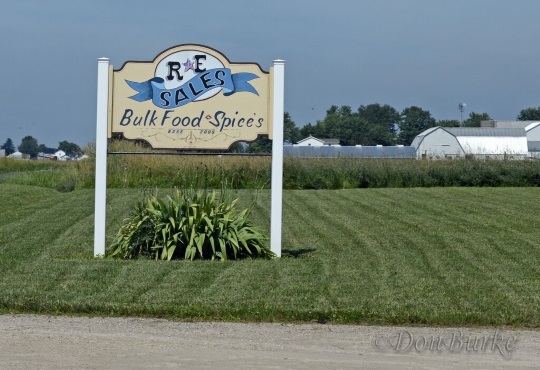
But even though these attempts to engage with the Amish didn’t go exceptionally well, I did have the opportunity to enjoy more lengthy visits with two different people.
The first was an Amish deacon in Adams County – a man who had such a reputation for his friendliness that he was known among online-forum-chatters for being a must-see guy for Berne visitors. He had a retail shop beside his home where he sold and repaired shoes and boots.
My wife and I stopped by to see his shop, and when he found out I was a pastor he asked us to sit and visit. We must have talked with him for an hour or so – he was such an interesting and engaging man. We also stopped back by his shop for a second (shorter) visit the next morning before leaving town. And I think it was a week or two later that he even called me at home to ask if we had made it home okay and see how we were doing.
The second visit was with an Amish father in Seymour. I noticed a sign for homemade sheep-milk soap on the country road and decided to check it out.

As I pulled into his place at the end of a long driveway I was immediately greeted by a swarm of his very curious, mostly friendly, but slightly apprehensive children. There seemed to be seven or more kids ranging from near-adolescence down to toddler.
After a moment or two of talking with this welcoming committee, the father came out with his own friendly greetings and demeanor. For the next half-hour we talked about most anything – from the fact that his wife would be undergoing some significant medical procedures the next day, to sheep farming (and sheep-milk-soap making), to what kind of fuel they burned in the buggy-lanterns.
The family’s very small once-shed-now-mini-store carried a handful of homemade items, including the sheep-milk soap, a liquid household cleaner, handmade cards created by the children, and a few other items. It was a memorable visit to say the least.
It was while visiting some of the stores and shops in Berne that I first discovered the mother-daughter relationship between Berne and Seymour.
On more than one occasion, when an Amish person discovered my wife and I lived in Missouri, they perked up a little and asked if we had any connection with the Amish in Seymour (which, as it turned out, I had visited twice just the previous month). Some went on to explain family and friendship connections that they had with the Amish who now lived there.
So, in visiting the Amish stores and home businesses I observed different levels of willingness to engage with an outsider. As mentioned, part of any hesitancy might be because the Swiss Amish as a whole tend to be less engaging with outsiders. And maybe some hesitancy was awkwardness as an unknown English man (myself) attempted to initiate a conversation with an Amish woman, sometimes with no one else nearby.
These and other factors possibly affected the situation. But I didn’t notice that location played into this in any way – the Amish didn’t seem any more or less open to conversation in any of the three communities. I did noticed that finding a point of possible connection (e.g., possibly knowing or having met the same people) was a way to reduce at least some of that hesitancy.
Oddities and Misc.
Before leaving the subject of Amish stores, I will share this: While most of the items I saw in the stores seemed to fit with my ideas of typical Amish life…

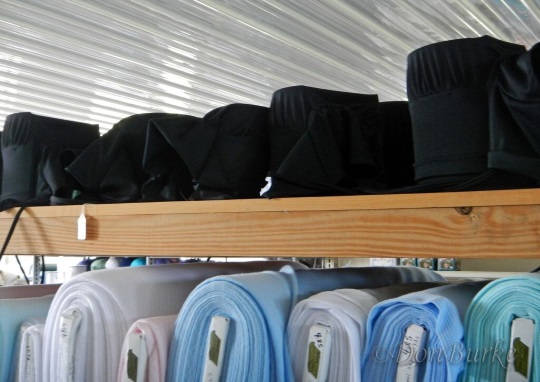
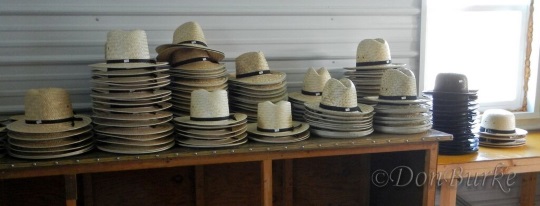
…this one item in a Berne store was a bit of a surprise.
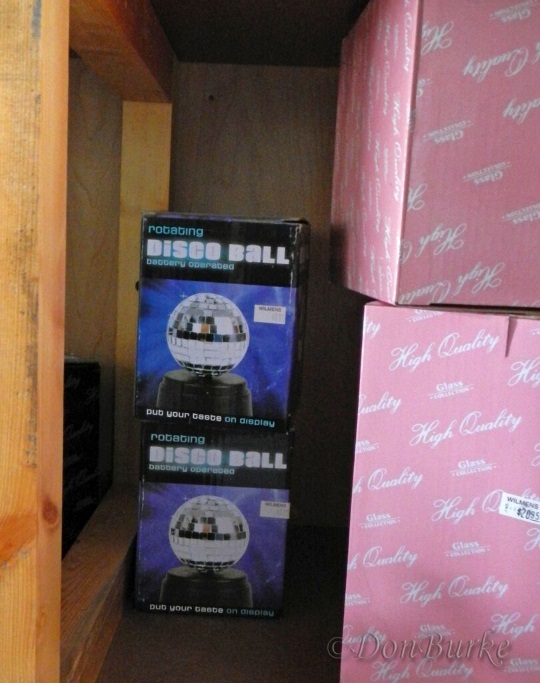
Speaking of surprises, this cargo box mounted on a buggy (Seymour) was different than anything I noticed in the other communities.
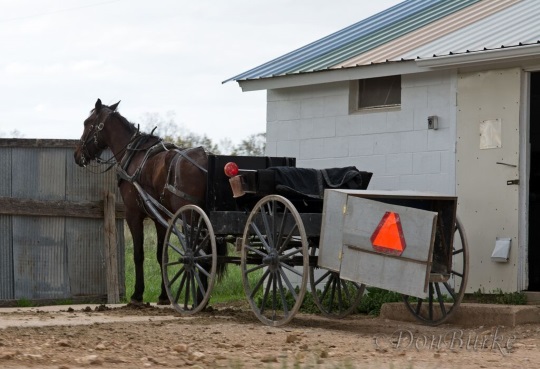
Here it was used to carry milk pails to a “milk house” (or “milk station”) – a building with electricity and refrigeration owned by English and used by the Amish to prevent spoilage.
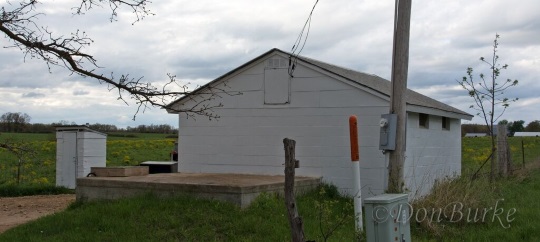
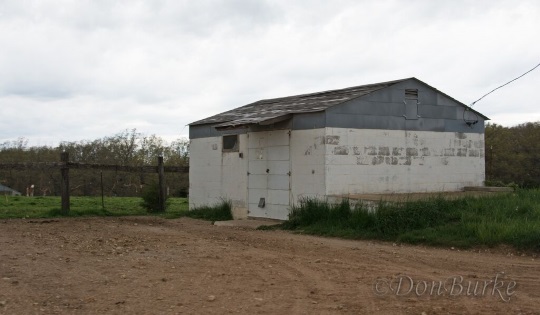
Another oddity, found in both Seymour (shown here) and Berne, were the outdoor water kettles used for heating water. This one burns wood for heat, and I have seen different models in other communities that use natural gas.
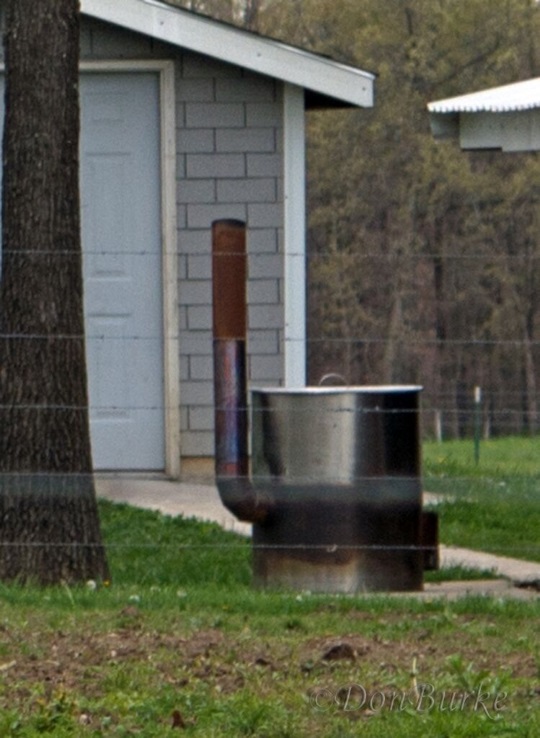
As we toured through Berne I noticed the Amish utilizing small gasoline-powered engines, as here running a home water pump:
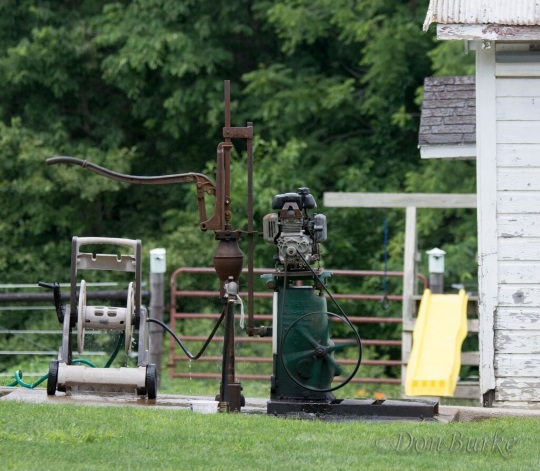
And here powering some appliance inside a store:
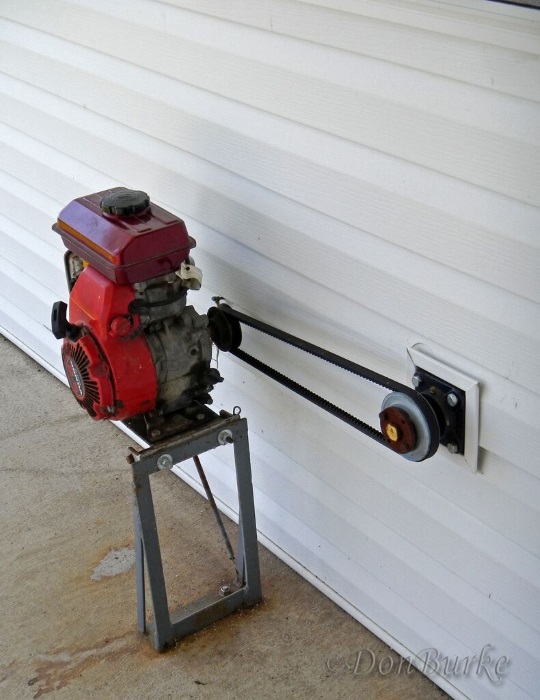
I don’t recall seeing any of these used in either Seymour or Licking.
Closing Thoughts
Mothers and daughters – sometimes you can see the reflection of one in the other, and at other times they are so very different. And at all times they are all their own unique individuals.
A special thanks to Don for his observations and photos. You can find more of Don’s photography on Flickr or his Facebook page.


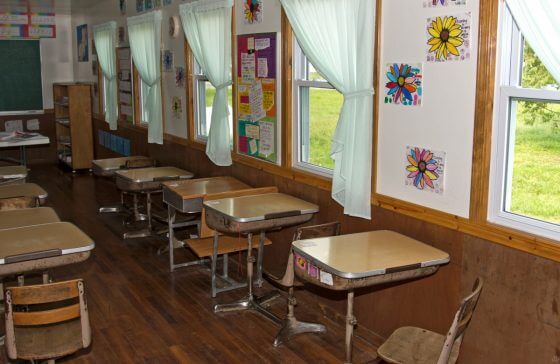

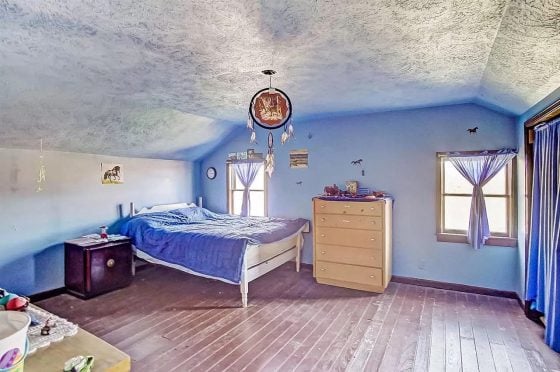
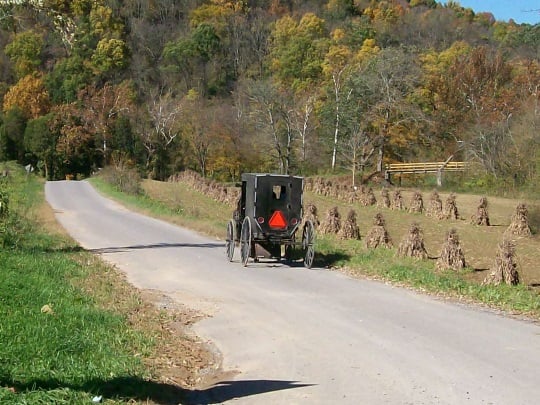

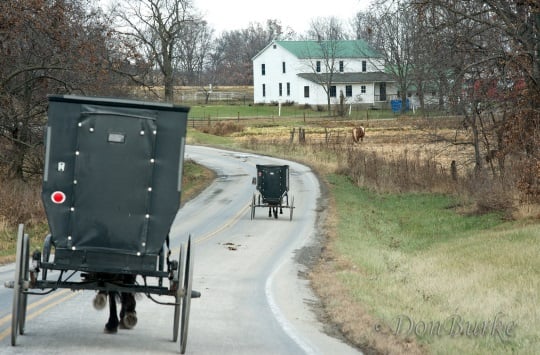
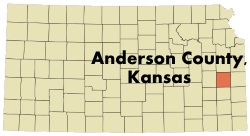
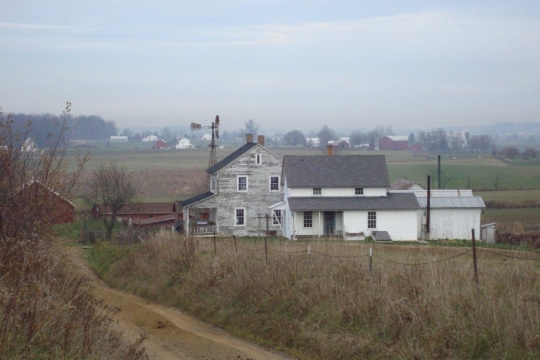
Berne, Seymour ties
Thank you for another interesting article. I have many Amish friends here in Kentucky, with ties to both Berne, and Seymour. I have been fortunate enough to travel to both areas, but mostly to Seymour. Many in the community here came from Seymour, by way of Berne. I have been welcomed into homes in both areas, and treated as much like family, as any outsider could hope to be. They have fed me, and given me a place to sleep, on many occasions. Sometimes for days at a time. I just returned from Seymour from a family gathering. What a sight to behold. And, to have a seat at their tables was truly an honor. I love listening to the stories of the older folks. I hope to read stories of the community here in Kentucky in the near future.
That’s great Glenn, it sounds like they like having you around!
Which community in Kentucky are you referring to? I just met an Amish couple from Irvington, KY in Florida last month.
Another offshoot from Seymore
Another community of 4 or 5 districts that came from Seymour is sandwiched between Dennis, KS and Thayer, KS. About a 100 families and nearly all Shwartz’s. They are quick to point out their roots to Seymour and they live plainer then many. Community started about 20 years ago. I have found most to be very friendly if spoken to.
nice job
As usual very nice job Don. Thx very much for you ongoing contributions.
Thanks Jim. I enjoy sharing what others enjoy reading about.
For your information, the exact number of families moving to Seymour from Berne in 1968 was 28. I myself have not visited Seymour but do see Berne once or twice.
Thanks...
Thanks for the feedback with a more exact figure, Raymond. My “some 20 families” was pulled from Milo Shwartz’s accounting given in the introduction to the Seymour section of the 2016 Amish Directory, and sadly I couldn’t get my hands on an earlier edition for more detail.
Amish Conversations
Having grown up in south central Pennsylvania, not far from Lancaster County, we had fairly regular contact with the Amish at Root’s Farm Market and the Green Dragon Market, as well as the Lancaster City Market, I found them to be cautiously conversational. We now live in Springfield, Missouri so I enjoy driving out to Seymour to purchase eggs, both duck and chicken, and to visit with the Amish. I have had numerous conversations with mostly the men, and have found some to be more open to conversation than others, but that’s not much different from the English as well. I have found some of the Amish to be quite curious about our life and our travels, with questions focused on those topics. They are delightful people who have worked hard to preserve their way of life and I respect them for that.
It’s funny Howard but while I’ve been to a good number of Amish markets, I’ve never been to one really in the Lancaster County area, despite spending a good amount of time there on many visits (closest is probably in York County). I guess I just never think of going to the markets while I’m there, but perhaps I should next time. Of the three you mention, which did you like the best to visit?
Have you explored those in Dunnigan, Flemmington, & Humansville
I used to shop on hwy123 starting at intersection of hwy13 heading south since there are bakeries & stores on or just off hwy123. A friend drives the area Amish when they call for an English friend with a car. Many times those English who do this are the ones to ask where all the Amish stores & shops are.
No Carol, I’m afraid that I have not been to those communities. But with time maybe I can get to some of them.
Reply to your reply
If you do go contact me I can give you contact for my friend who drives Amish. Since this is your article, you should be able to find my email that is not published.
Thanks!
Thanks for a great article and photos… truly fascinating! My limited experience with talking to Amish folks is quite similar… often caution and perhaps shyness–but occasionally somewhat the opposite. I remember one Amish man saying that if he waved to everyone who waved while driving by he’d never get anything done, so I think it’s important to remember we are often an interruption. Some of my best conversations have been the result of a mutual interest. For example, one time at an auction, an Amishman saw the Maine license plates on my vehicle and wanted to talk about living in Maine. At that same auction, I happened to sit behind an Amish mom with a young child (toddler) who found me quite fascinating… we had a “non-verbal” conversation that included a number of hand gestures, smiles, and occasional giggles. I think it’s important to remember they are people–humans tat may dress differently but really we have more in common that not.
Thank you
Thank you for all the pictures and information. It is most interesting. You have a lot of time invested in picture-taking.
Much appreciated.
I am glad you enjoyed them, Loretta. And yes, my camera is almost always my constant companion “riding shotgun” with me as I travel — always at the ready if I see something interesting. So yeah, lots of hours and miles together.
Mother/Daughter settlements
Don
Again a really great job. My oldest brothers wife passed away last year but,I do know that she used to have relatives that lived in the Seymore area by the last name I believe was Christener. As you know I have Amish nephews in the Jamesport, MO. community. I also agree with you that the Jamesport community is a really great community to get the real feel of the diversity of a community. I have never been to the Seymore community. Whenever I am in a community I really do not have any problem to having a good conversation with anyone that meet, because of my Amish up bringing. I am proud to being associated with them. Blessings to your travels.
Hey Andy. Good to hear from you. As always, thanks for the compliments. Hey, maybe you could visit some there at Seymour and share with us about it.